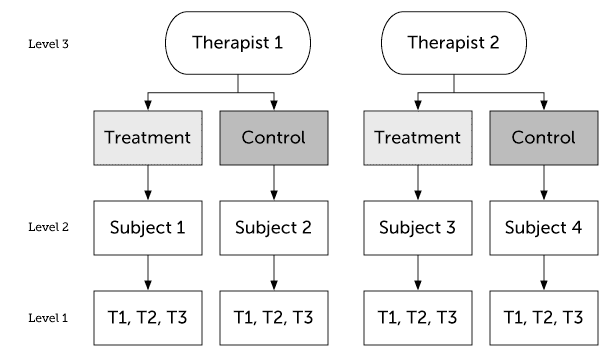I'm following up on this question. In short, imagine in a 3-wave, longitudinal study, two therapists both get to deliver the treatment and the control arms of the study to a different set of subjects (see the study design below).
The accepted answer mentions that for the study design shown below, the following (see The Suggested Model Syntax below) can be a reasonable model syntax (using R's lme4 package). In the following syntax, tx is a binary treatment indicator (0=control, 1=treatment).
Question: Let's focus on the terms to the left of | (i.e., time & time * tx), how can we justify the use of (time | subjects) and (time * tx | therapists)?
Stated differently, given the study design below, why should we estimate the random slope of time for subjects, but then the random slope of time * tx for therapists? What effects are being measured or disentangled from one another using these two terms in this particular design?
ps1. Why not (time * tx | therapists/subjects) OR (time | therapists/subjects)?
ps2. Does it have any effect on the model syntax to know that we have EITHER randomly assigned the therapists or subjects OR NOT in the below design?
# The Suggested Model Syntax:
lmer(y ~ time * tx + ## DON'T RUN
(time | subjects) +
(time * tx | therapists),
data = data)

